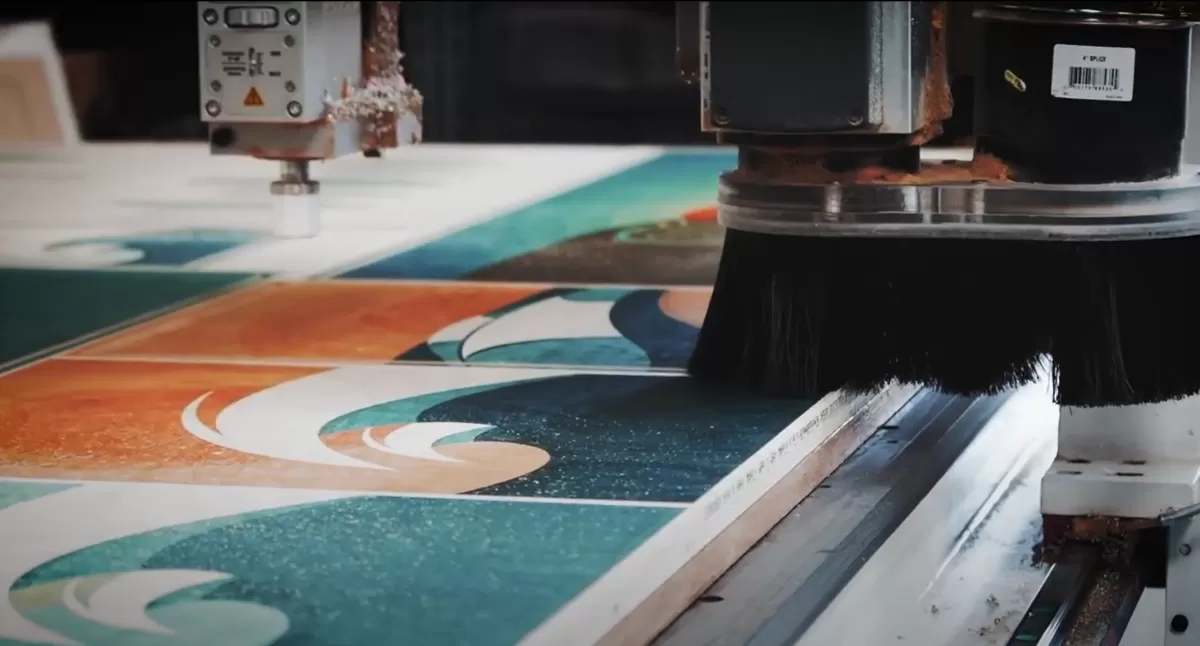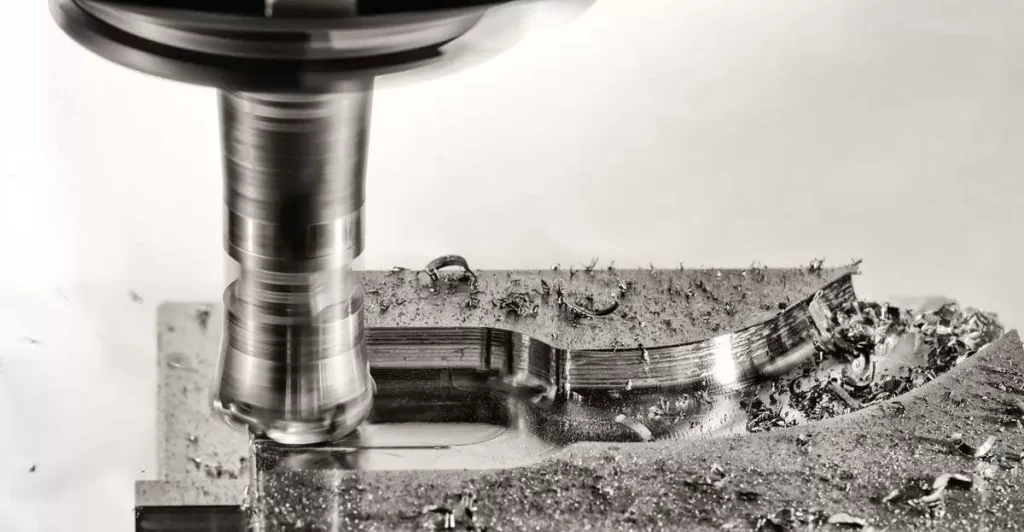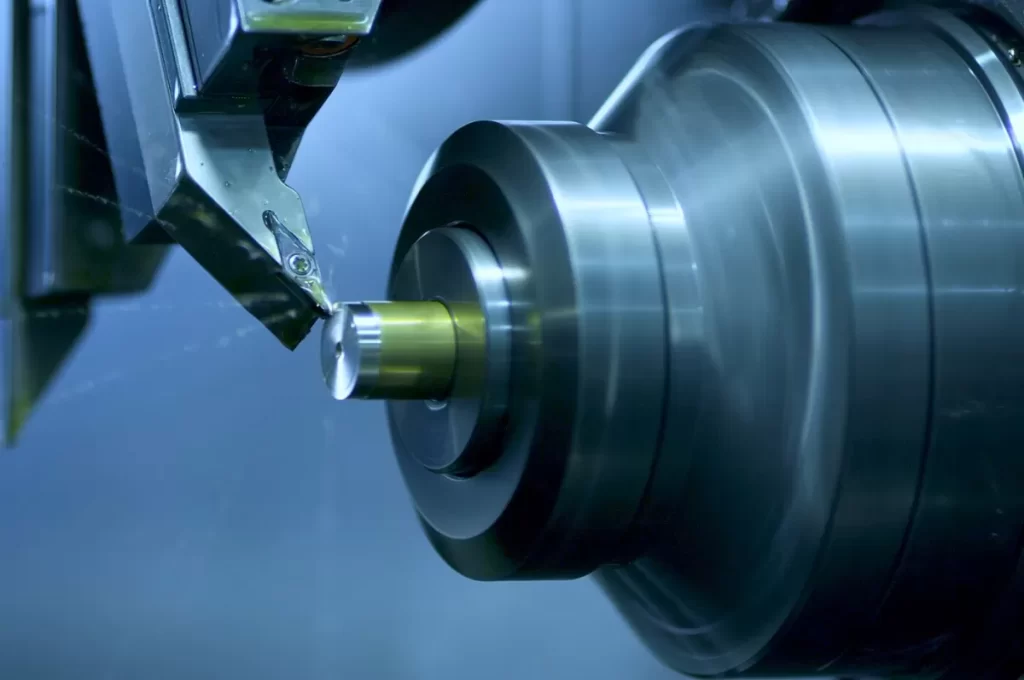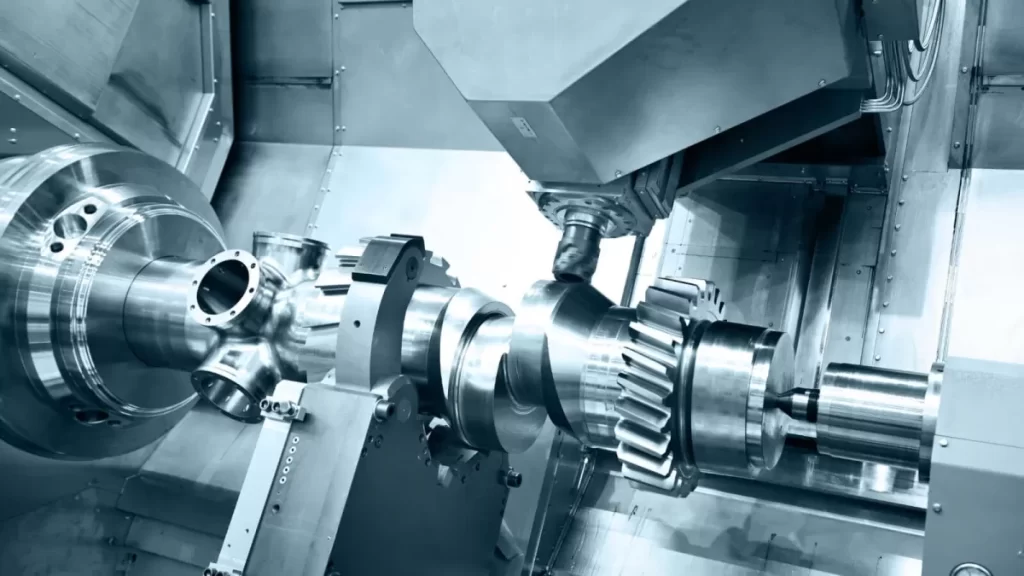Are you torn between a CNC router and a laser cutter for your next project? Choosing the right tool can transform your workflow, boost precision, and save you time and money. As experts in CNC processing, we at HYCNC have helped countless creators and businesses nail their projects with the perfect technology. In this guide, you’ll uncover the key differences, pros, and cons of CNC routers vs. laser cutters, plus insider tips to make the best choice—or why outsourcing to HYCNC’s services might be your smartest move. Let’s dive in!
What Are CNC Routers and Laser Cutters
When deciding how to shape or cut materials, understanding the difference between CNC routers and laser cutters is key. Both are powerful tools used in manufacturing and custom fabrication, but they work in very different ways.
CNC Router Overview
A CNC router is a computer-controlled cutting machine that uses a rotating tool, similar to a drill or milling bit, to carve and cut into various materials. It’s great for 3D carving, shaping wood, plastics, composites, and even metals. CNC routers are known for their ability to handle thick materials and create complex shapes by physically removing material with precise, multidimensional movements.
Laser Cutter Overview
Laser cutters use a focused beam of light to burn or vaporize material with extreme precision. This makes laser cutters ideal for thin materials, detailed engraving, and intricate cuts. They are especially popular for cutting fabric, paper, wood veneer, acrylic, and some metals. Laser cutting is fast and delivers smooth edges, making it perfect for applications that demand high precision and clean finishes.
How HYCNC Utilizes Both Technologies
At HYCNC, we understand that no single tool fits all projects. That’s why we combine the strengths of both CNC routers and laser cutters in our processing services. For thicker, more complex 3D shapes or heavy-duty cuts, we rely on CNC routers. When your project calls for detailed engraving or fast, precise cutting of thin materials, we turn to laser cutting. This dual approach lets us offer tailored solutions that meet the unique needs of each client in the United States market, ensuring quality, speed, and cost efficiency throughout the process.
Key Differences Between CNC Routers and Laser Cutters
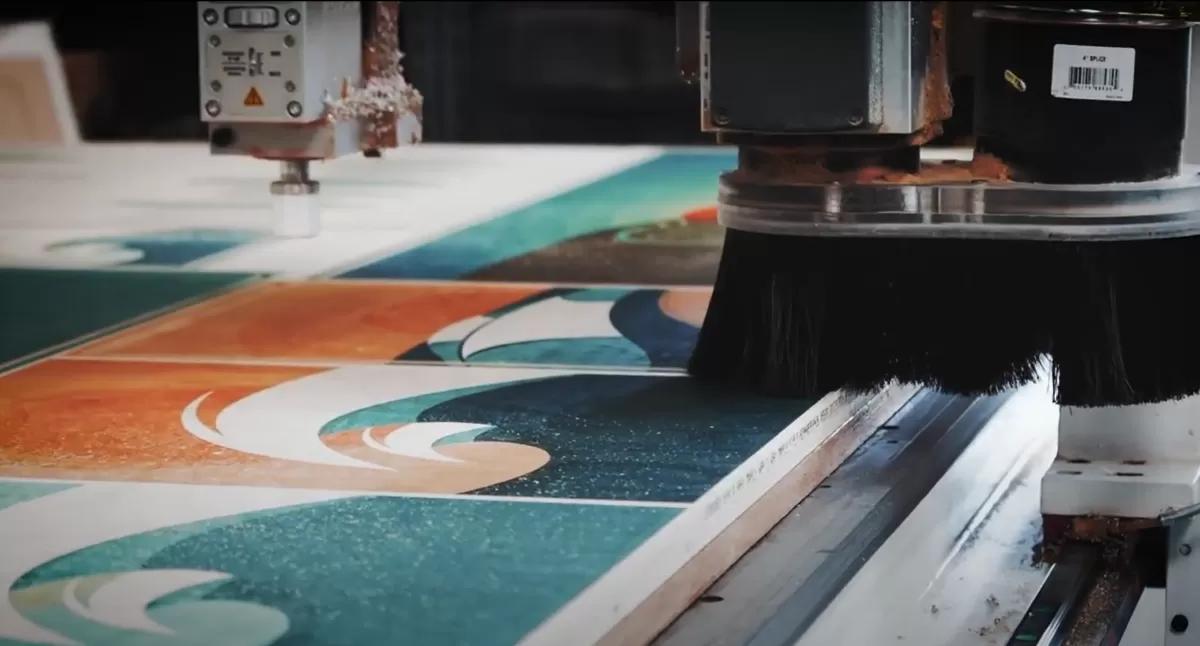
Cutting Mechanism
CNC routers use a spinning bit to physically cut or carve into materials. This makes them great for 3D carving and deeper cuts. Laser cutters, on the other hand, use a focused laser beam that vaporizes or burns the material surface. This means laser cutting precision is usually higher, especially for thin materials and fine details.
Material Compatibility
CNC routers can handle a wide range of materials, including wood, plastics, aluminum, and even some soft metals. Laser cutters are excellent for thin materials like acrylic, fabric, paper, and wood but struggle more with thicker or highly reflective metals. So if you’re looking at material compatibility CNC routers have a broader range.
Precision and Finish
Laser cutters deliver cleaner edges and finer details because the laser beam is very precise. This makes them ideal for detailed engraving and small, intricate cuts. CNC routers are precise too but can leave rougher edges and require some finishing, especially on complex cuts or 3D shapes.
Depth of Cut
CNC routers excel when you need to cut deeper or 3D carving, thanks to their spinning bits that physically remove material. Laser cutters usually work best on surface-level cuts or shallow engravings, with limited depth control.
Speed and Efficiency
Laser cutters generally operate faster for thin materials and detailed work because their cutting path is quick and requires fewer passes. CNC routers might take more time, especially on thicker or complex 3D parts, but they handle heavy-duty cutting better.
Cost Considerations
CNC router cost can vary widely depending on size, power, and capability. They often involve higher maintenance due to moving parts that wear out. Laser cutters typically cost less for entry-level machines and require less maintenance since they have fewer moving parts, but industrial laser systems can be pricey.
Understanding these key differences helps you pick the right tool for your project. At HYCNC, we combine CNC and laser cutting tech to offer the best of both worlds for your needs.
Pros and Cons of CNC Routers and Laser Cutters
CNC Router Pros and Cons
Pros
- Great for cutting thick and dense materials like wood, plastics, and soft metals
- Can perform 3D carving and shaping, adding depth to your projects
- Good for large-scale projects with deeper cuts and complex designs
- Durable and versatile for heavy-duty CNC machining tasks
Cons
- Slower when it comes to fine, detailed cuts compared to laser cutting
- Requires frequent bit changes and maintenance for optimal performance (learn more about CNC router bits)
- Possible tool wear and tear, which can increase CNC router cost over time
- Not ideal for very thin or delicate materials
Laser Cutter Pros and Cons
Pros
- Excellent precision for intricate designs and fine details with laser cutter precision
- Fast cutting speed, especially on thin materials like acrylic, fabric, and paper
- Clean edges with minimal finishing required
- Can also perform laser engraving on various materials (understand laser engraving vs laser etching)
Cons
- Limited in cutting thicker and denser materials; usually max thickness is less than what CNC routers handle
- Higher initial investment and maintenance costs (check the true cost of owning a laser cutter)
- Material compatibility CNC can be restrictive for some metals and composites
- Requires proper ventilation and safety measures
Table Comparison
| Feature | CNC Router | Laser Cutter |
|---|---|---|
| Cutting Mechanism | Rotary tool bit | Focused laser beam |
| Best Materials | Wood, plastics, soft metals | Thin metals, acrylic, fabric |
| Precision & Finish | Good for deep cuts and 3D | Superior for fine details |
| Depth of Cut | Can cut deep and 3D shapes | Limited depth, mostly surface |
| Speed | Slower on fine details | Fast on thin materials |
| Maintenance | Tool bit wear, bit changes | Laser tube maintenance |
| Cost | Moderate initial cost | Higher initial and upkeep cost |
Both CNC routers and laser cutters have their strengths and weaknesses. Choosing depends on your project needs like material type, precision, and budget. At HYCNC, we combine these technologies to deliver tailored solutions that get the job done right.
Which Tool Is Best for Your Project
Choosing between a CNC router and a laser cutter really depends on what your project needs. Both have their strengths, so let’s break down the key decision points to help you pick the right tool.
Project-Based Decision Factors
- Material Type: If you’re working with wood, plastic, or thicker materials that need 3D carving, a CNC router is your go-to. For thin materials like acrylic, paper, or fabric that require clean, precise cuts or engraving, a laser cutter shines.
- Detail and Precision: Laser cutters offer superior precision perfect for fine details or laser engraving thin materials. CNC routers handle deeper cuts and 3D shapes better but at a slightly lower resolution.
- Cutting Depth: Need to cut through thick stock or carve complex contours? CNC routers handle depth with ease. Lasers are mainly surface-level cutters or engravers.
- Speed and Volume: Laser cutting speed is great for fast, repetitive jobs with thin materials. CNC routers may be slower but are better for diverse material types and complex shapes.
- Budget and Maintenance: CNC router cost can be higher upfront but offers versatility. Laser cutter maintenance requires cleaning optics but can be more affordable over time for specific tasks.
Common Applications
- CNC Router: Cabinet making, furniture parts, signage with depth, 3D carving, and heavy-duty material processing.
- Laser Cutter: Custom engravings, jewelry design, quick prototyping, thin material cutting, and detailed art projects.
Why Choose HYCNC’s Services
At HYCNC, we expertly utilize both CNC routers and laser cutters to fit your project perfectly. Our local service in the US ensures quick turnaround times and precise quality control. Whether you need detailed laser engraving or heavy-duty CNC machining, we provide:
- Customized solutions based on your material and design
- Competitive pricing with transparent CNC router cost and laser cutter maintenance options
- Experienced operators ensuring your design comes to life exactly as planned
Pick HYCNC to get the best of both worlds with professional CNC and laser cutting tailored to your unique needs.
Practical Tips for Choosing Between CNC Router and Laser Cutter
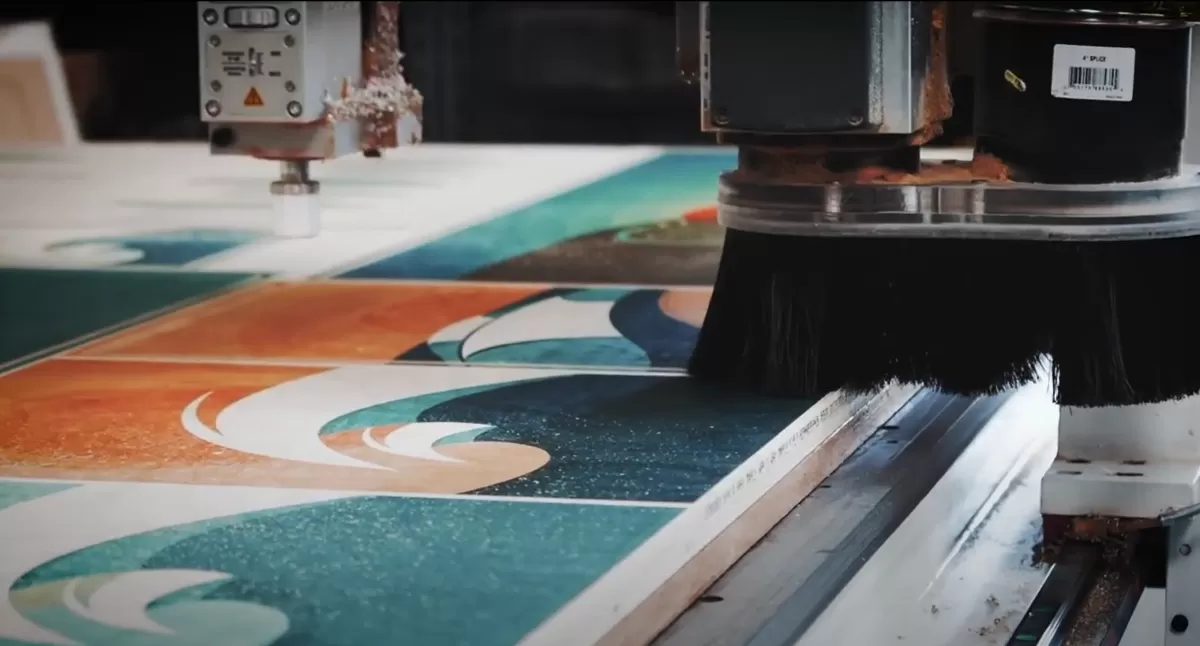
Choosing between a CNC router and a laser cutter depends on your project’s specific needs. Here are some straightforward tips to help you decide:
-
Consider the Material: CNC routers handle thicker, harder materials like wood, plastics, and metals better. Laser cutters shine with thin materials, especially for delicate tasks like laser engraving thin materials or cutting precise shapes on acrylic or fabric.
-
Think About Detail and Precision: If your project needs extreme precision and clean edges, laser cutters offer excellent laser cutter precision. CNC routers are great for detailed 3D carving CNC router work but might not get as fine as a laser cutter on thin lines.
-
Look at Cutting Depth: For deeper cuts or shaping, CNC routers usually outperform laser cutters. Lasers are more surface-oriented, ideal for cutting or engraving shallow designs.
-
Check Your Speed Needs: Laser cutting speed is typically faster for thin materials and light designs. If you’re running high-volume, quick jobs on thinner stock, laser cutters can save time.
-
Consider Your Budget: CNC router cost is often higher for tooling and maintenance, but laser cutter maintenance can also add up depending on the machine and usage. For insights, check out our detailed post on the true cost of owning a laser cutter.
-
Project Type Matters: For custom signs, packaging prototypes, or delicate artwork, laser cutters are usually better. For furniture components, structural parts, or 3D custom pieces, CNC routers are the go-to.
-
Service Availability: Using professional HYCNC processing services means you can combine the best of both worlds. We offer expert CNC and laser cutting services to match your project needs without the hassle of owning the equipment.
Keep these tips handy to pick the right tool, making sure your project comes out looking and performing just right.
Future Trends in CNC and Laser Cutting
The future of CNC routers and laser cutters looks promising, with new tech pushing the limits of precision, speed, and material options. Here’s a quick look at what’s coming next in CNC vs laser cutting:
-
Increased Automation: More smart features and AI integration will simplify programming and reduce human error. Expect machines that can self-correct and optimize on the fly, boosting efficiency.
-
Hybrid Machines: Combining CNC routing and laser cutting in a single setup will become more common. This lets users do 3D carving and precise laser engraving without switching tools, saving time and cost.
-
Expanded Material Compatibility: Advances will allow lasers to cut thicker metals and harder materials while CNC routers will handle more composites and plastics with improved bits and software.
-
Eco-friendly Processes: Both CNC and laser cutting are moving toward greener manufacturing with lower energy use and less waste. This is becoming a big factor for US businesses focused on sustainability.
-
Better Precision and Speed: Hardware upgrades and better software algorithms mean finer cuts faster than ever. This benefits industries like aerospace and custom manufacturing requiring tight tolerances.
At HYCNC, we keep up with these trends to offer leading-edge processing services tailored to your needs. Whether you require laser cutting speed or 3D carving from CNC routers, we’re ready to meet the evolving demands of American makers and manufacturers.
For more details on laser cutting technology, check out our guide on What is Laser Cutting.

